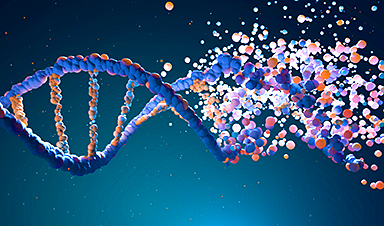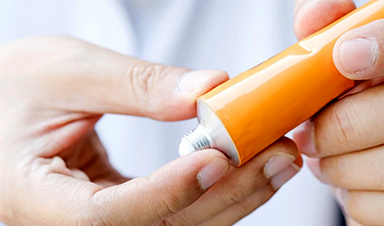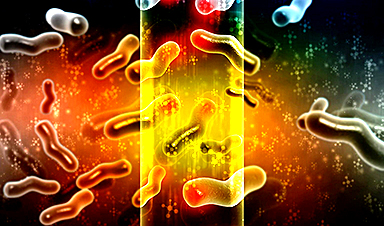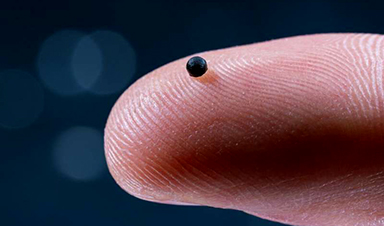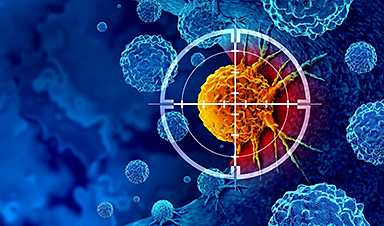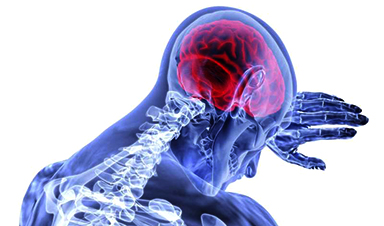Every skin flake, hair follicle, eyelash, and spit drop cast from your body contains instructions written in a chemical code, one that is unique to you.
According to a new study, technology has advanced to the point that it's now possible to sift scraps of human DNA out of the air, water, or soil and decipher personal details about the individuals who dropped them.
As useful as this might seem, the study's authors warn society might not be prepared for the consequences.
"Any time we make a technological advance, there are beneficial things that the technology can be used for and concerning things that the technology can be used for," says University of Florida zoologist David Duffy, who led a project that tested the limits of sequencing human DNA from the environment.
"These are issues we are trying to raise early so policy makers and society have time to develop regulations."
Earth's surface is dusted in discarded plant and animal cells and disintegrated microbes, spilling out what researchers refer to as environmental or 'e' DNA.
By amplifying the smallest scraps of eDNA and reading the sequences, researchers can accurately produce an ecological cast list of organisms present in any one habitat, all at speeds and costs that couldn't be achieved by field work.
What's more, those representative genetic samples can also deliver insights that no other process could accomplish on their own, such as informing researchers on the presence of diseases or the relationships between populations.
This is all well and good when zoologists are plucking long lost genes from ancient sediment, or fishing for signs of a mythological monster in Loch Ness. But in that genetic soup there are bound to be strands of material left by passing humans as well. And unlike Nessie, people tend to get a little funny about who snoops on their genetic secrets.
While older methods of sequencing have struggled to find meaningful human genetic sequences within eDNA samples, a process known as shotgun sequencing isn't quite so limited, as demonstrated by Duffy and his team in their recent investigation.
The research team took water and sand samples from near the Whitney Laboratory for Marine Bioscience and Sea Turtle Hospital at the University of Florida, and from environments along a river in Duffy's home country of Ireland. Among the sites they collected samples from was an isolated island and a mountain stream far from human habitation.
Referred to as human genetic bycatch (HGB), many of the chromosomal fragments they identified using the shotgun approach contained identifying information about their source.
Only the island and remote stream were free of human DNA, although traces of the research team's own genes could be extracted from their footprints in the isolated island's sand.
Air samples from the university's sea turtle hospital also contained eDNA that could be traced to staff, animals, and common animal viruses.
"We've been consistently surprised throughout this project at how much human DNA we find and the quality of that DNA," says Duffy. "In most cases the quality is almost equivalent to if you took a sample from a person."
It's easy to think of ways such highly detailed genetic assays using HGB might be applied in fields of epidemiology or population genetics. Yet the sources of the identifiable DNA in this experiment all consented to be involved in the study, in line with the ethics of published genetic research.
"It's standard in science to make these sequences publicly available. But that also means if you don't screen out human information, anyone can come along and harvest this information," says Duffy.
"That raises issues around consent. Do you need to get consent to take those samples? Or institute some controls to remove human information?"
As a forensics tool, the benefits are something of a doubled-edged sword, expanding on methods for tracing individuals to a scene of a crime.
Yet in light of the CSI effect, where the results of DNA testing is easily misinterpreted by a Hollywood-influenced judiciary, the legal consequences of HGB identification are also yet to be fully explored.
There is also the concern of how far public surveillance should extend in the name of security.
"To be sure, solving crime is a good thing," says Natalie Ram, a law expert from the University of Maryland who wasn't involved in the study.
"But exploiting involuntarily shed genetic information for investigative aims risks putting all of us under perpetual genetic surveillance."
We might imagine an authority maintaining an archive of DNA scraps that have drifted onto just about any crime scene, one few of us would feel comfortable being a part of.
It's far from the first time society has wrestled with the ethical and legal questions of genetic rights, of course. But the net collecting personal genetic information is clearly growing, prompting us to continue asking who should have the ultimate say over the unique code that describes us as individuals.
News
Novel mRNA therapy curbs antibiotic-resistant infections in preclinical lung models
Researchers at the Icahn School of Medicine at Mount Sinai and collaborators have reported early success with a novel mRNA-based therapy designed to combat antibiotic-resistant bacteria. The findings, published in Nature Biotechnology, show that in [...]
New skin-permeable polymer delivers insulin without needles
A breakthrough zwitterionic polymer slips through the skin’s toughest barriers, carrying insulin deep into tissue and normalizing blood sugar, offering patients a painless alternative to daily injections. A recent study published in the journal Nature examines [...]
Multifunctional Nanogels: A Breakthrough in Antibacterial Strategies
Antibiotic resistance is a growing concern - from human health to crop survival. A new study successfully uses nanogels to target and almost entirely inhibit the bacteria P. Aeruginosa. Recently published in Angewandte Chemie, the study [...]
Nanoflowers rejuvenate old and damaged human cells by replacing their mitochondria
Biomedical researchers at Texas A&M University may have discovered a way to stop or even reverse the decline of cellular energy production—a finding that could have revolutionary effects across medicine. Dr. Akhilesh K. Gaharwar [...]
The Stunning New Push to Protect the Invisible 99% of Life
Scientists worldwide have joined forces to build the first-ever roadmap for conserving Earth’s vast invisible majority—microbes. Their new IUCN Specialist Group reframes conservation by elevating microbial life to the same urgency as plants and [...]
Scientists Find a Way to Help the Brain Clear Alzheimer’s Plaques Naturally
Scientists have discovered that the brain may have a built-in way to fight Alzheimer’s. By activating a protein called Sox9, researchers were able to switch on star-shaped brain cells known as astrocytes and turn them into [...]
Vision can be rebooted in adults with amblyopia, study suggests
Temporarily anesthetizing the retina briefly reverts the activity of the visual system to that observed in early development and enables growth of responses to the amblyopic eye, new research shows. In the common vision [...]
Ultrasound-activated Nanoparticles Kill Liver Cancer and Activate Immune System
A new ultrasound-guided nanotherapy wipes out liver tumors while training the immune system to keep them from coming back. The study, published in Nano Today, introduces a biodegradable nanoparticle system that combines sonodynamic therapy and cell [...]
Magnetic nanoparticles that successfully navigate complex blood vessels may be ready for clinical trials
Every year, 12 million people worldwide suffer a stroke; many die or are permanently impaired. Currently, drugs are administered to dissolve the thrombus that blocks the blood vessel. These drugs spread throughout the entire [...]
Reviving Exhausted T Cells Sparks Powerful Cancer Tumor Elimination
Scientists have discovered how tumors secretly drain the energy from T cells—the immune system’s main cancer fighters—and how blocking that process can bring them back to life. The team found that cancer cells use [...]
Very low LDL-cholesterol correlates to fewer heart problems after stroke
Brigham and Women's Hospital's TIMI Study Group reports that in patients with prior ischemic stroke, very low achieved LDL-cholesterol correlated with fewer major adverse cardiovascular events and fewer recurrent strokes, without an apparent increase [...]
“Great Unified Microscope” Reveals Hidden Micro and Nano Worlds Inside Living Cells
University of Tokyo researchers have created a powerful new microscope that captures both forward- and back-scattered light at once, letting scientists see everything from large cell structures to tiny nanoscale particles in a single shot. Researchers [...]
Breakthrough Alzheimer’s Drug Has a Hidden Problem
Researchers in Japan found that although the Alzheimer’s drug lecanemab successfully removes amyloid plaques from the brain, it does not restore the brain’s waste-clearing system within the first few months of treatment. The study suggests that [...]
Concerning New Research Reveals Colon Cancer Is Skyrocketing in Adults Under 50
Colorectal cancer is striking younger adults at alarming rates, driven by lifestyle and genetic factors. Colorectal cancer (CRC) develops when abnormal cells grow uncontrollably in the colon or rectum, forming tumors that can eventually [...]
Scientists Discover a Natural, Non-Addictive Way To Block Pain That Could Replace Opioids
Scientists have discovered that the body can naturally dull pain through its own localized “benzodiazepine-like” peptides. A groundbreaking study led by a University of Leeds scientist has unveiled new insights into how the body manages pain, [...]
GLP-1 Drugs Like Ozempic Work, but New Research Reveals a Major Catch
Three new Cochrane reviews find evidence that GLP-1 drugs lead to clinically meaningful weight loss, though industry-funded studies raise concerns. Three new reviews from Cochrane have found that GLP-1 medications can lead to significant [...]
